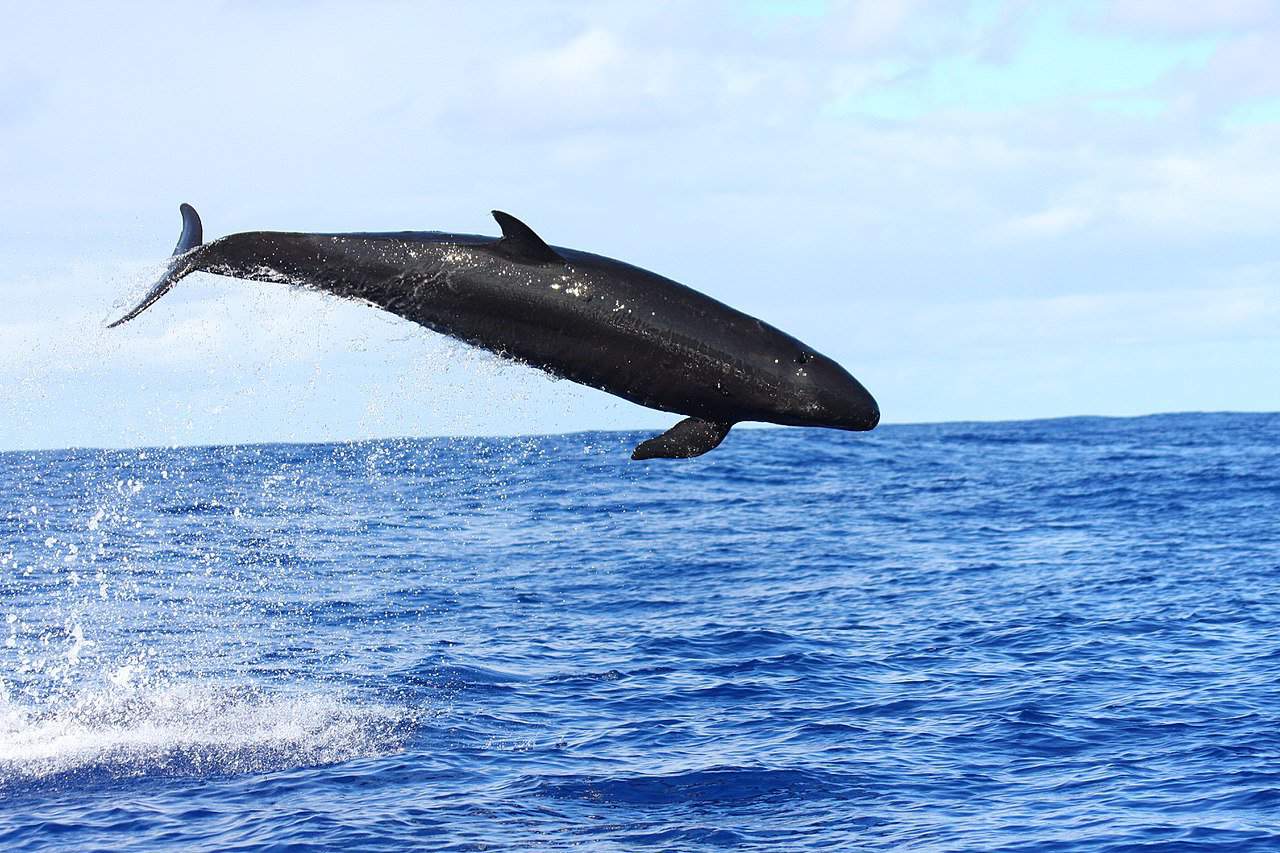Costa Rica’s reputation as a haven for nature enthusiasts and wildlife lovers has once again been affirmed by a remarkable encounter in its rich coastal waters. In a thrilling experience that highlights the country’s incredible marine biodiversity, a group of tourists recently witnessed a spectacular display of one of the ocean’s most fascinating creatures.
As one of the most bioproductive pelagic marine habitats on Earth, the deep ocean off Costa Rica’s southwestern Osa Peninsula is known for its spectacular whale and dolphin watching. During a dolphin tour 32 kilometers (20 miles) from Osa, tourists encountered a pod of about 60 pseudorcas (Pseudorca crassidens), also known as false killer whales. After following the pod for over an hour, the group stopped for a break, and this mother and baby stopped with them.
Pseudorcas are the third-largest members of the dolphin family and are closely related to orcas. This encounter provides a rare glimpse into the lives of these elusive marine mammals, showcasing the rich biodiversity that makes Costa Rica a prime destination for ecotourism.
The sighting of a mother and baby pseudorca is particularly significant, offering insights into the breeding habits and family structures of these intelligent creatures. It’s a testament to the health of Costa Rica’s marine ecosystems and the importance of conservation efforts in the region.
For expats and long-term visitors in Costa Rica, such encounters serve as a reminder of the country’s natural wonders and the importance of preserving them. Many who have made Costa Rica their home cite its incredible biodiversity and commitment to environmental protection as key factors in their decision to relocate.
The Osa Peninsula, in particular, is a jewel in Costa Rica’s crown of natural attractions. Home to Corcovado National Park, often described as “the most biologically intense place on Earth” by National Geographic, the peninsula offers unparalleled opportunities for wildlife observation both on land and at sea.
For those planning to visit or already residing in Costa Rica, whale and dolphin watching tours are a must-do activity. The best time for these excursions is typically between July and October when humpback whales migrate to the area. However, as this recent pseudorca encounter demonstrates, the waters off Costa Rica’s coast are teeming with marine life year-round.
It’s important to note that while such encounters are thrilling, responsible tourism practices are crucial. Tour operators in Costa Rica are generally well-versed in sustainable practices, ensuring that wildlife viewing is conducted with minimal disturbance to the animals.
As we continue to explore and appreciate Costa Rica’s natural wonders, let’s remember our role in preserving these incredible ecosystems for future generations. Whether you’re a tourist, an expat, or a local, experiences like this pseudorca encounter remind us of the magic that awaits in Costa Rica’s waters and the importance of protecting these magnificent creatures and their habitats.






